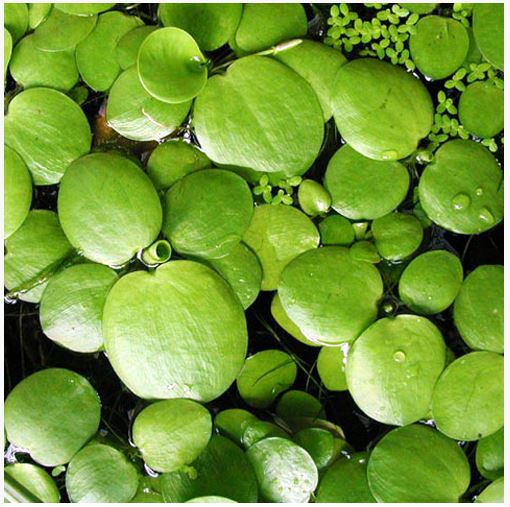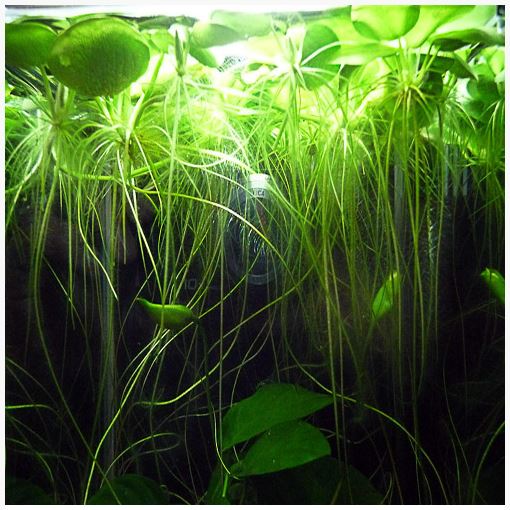Frogbit Plant: Care and Growth

Welcome to the Fascinating World of the Frogbit Plant! I'm thrilled to share with you the wonders of this captivating aquatic gem. Picture yourself surrounded by its lush green leaves, reminiscent of charming lily pads, floating gracefully on the water's surface.
As I guide you through the ins and outs of caring for and propagating the Frogbit plant, you'll discover the secrets to creating the perfect environment for its thriving growth.
From providing the ideal amount of sunlight and water to understanding its unique floating habit, we'll delve into every aspect of its care.
Whether you're an experienced gardener or a curious beginner, together we'll unlock the enchantment of cultivating and multiplying this mesmerizing plant.
Get ready to embark on an extraordinary journey into the realm of the captivating Frogbit plant!
Key Features :
Scientific Names: Limnobium laevigatum
Common Names: White Frogbit, Common European Frogbit
Color: Green/white
Height: Floating up to 2 inches above the water surface
Spread: Forms dense mats across water's surface
What is Frogbit
Native to Europe, Asia, and Africa, Frogbit is commonly found in slow moving streams, ponds, and ditches. Each plant develops from a small tuber which overwinters on the bottom in dormancy. In spring, new leaves emerge and multiply to form dense mats across the water. Frogbit contributes oxygen to aquatic environments while providing shade and cover for fish and wildlife.
Benefits and Usage
Commonly used in garden ponds and aquatic gardens, Frogbit is low maintenance and easy to establish. It helps control algae growth and improves water quality. While unable to survive winters in colder climates, Frogbit may be grown indoors in aquariums year-round. All plant parts should be avoided, as ingestion may cause mild to severe irritation or vomiting. Proper precautions are recommended when handling.

Physical Appearance
Frogbit, scientifically known as Limnobium laevigatum, is a small, delicate floating aquatic plant that adds charm to freshwater habitats. It features round, green leaves that resemble lily pads, giving it a compact and visually appealing appearance.
Growth Habit
Frogbit does not have a specific growth habit like a vine, shrub, or tree as it is a floating plant. It thrives by floating on the water's surface.
Basic Care Requirements
Water Conditions
Frogbits thrives in freshwater environments with a pH range of 6.0 to 7.5.
Regularly test the water parameters using a reliable test kit (Taylor Technologies Test Kits, LaMotte Water Test Kits, API Freshwater Master Test Kit, and many more) and make adjustments as necessary.
Maintain a water temperature between 64°F and 86°F (18°C to 30°C) to prevent stress or damage to the plants.
It is crucial to maintain stable water conditions to ensure the health of your plants.
Lighting
Prefers moderate to high indirect light. Avoid exposing them to direct sunlight, as it can scorch the leaves.
You can use LED lights, full spectrum T5 or T8 bulbs or fluorescent tubes. Lighting duration for this species should be between 10 – 12 hours per day.
Frogbit plant will not thrive under low lighting conditions. It will stop growing and get sick.
CO2 and Nutrients
There is no need to add CO2 to the aquarium.
However, fertilizer should be added to the water regularly, and it’s always a good idea to add a high quality fertilizer like Seachem Flourish during weekly water changes.
Water Movement
Frogbit plants prefer calm water with minimal water movement. Excessive water movement can cause these plants to struggle or become uprooted.
If you have a filter or a pump in your aquatic environment, consider adjusting the flow or adding a baffle to reduce the water movement around the plants.
Propagation
Frogbit reproduces sexually through flower pollination and seed production, although this can be difficult to reproduce in the home aquarium.
In an aquarium, most reproduction will occur through plant stem fragmentation. Smaller plants will break off the main plant, and they will grow to form full plants in their new location.
Placement in Tank
When placing frogbit in your tank, it is important to ensure that it receives sufficient light.
Placing it near a source of natural or artificial light, such as a window or aquarium light, will help promote healthy growth.
It is also important to make sure that the frogbit does not cover the entire surface of the water, as it needs access to fresh air to thrive.
Make sure that the top of the plant is kept dry at all times. If the tops of this plant stay wet for any length of time, it will begin to rot. So care must be taken when changing the water or placing it in the tank, or any splashing from a filter in the tank.
Substrate
As a floating plant, Limnobium Laevigatum doesn't need to be planted in the substrate. Simply allow it to float on the water's surface.
Water Hardness
Generally prefer slightly soft to moderately hard water with a range of 2 to 15 dKH (36 to 270 ppm).
Tank Size (minimum):
Get a minimum of 10 gallons (~40 liters) tank size. The growth rate of the frogbit plant is fast and they can easily take over the tank.
Larger tanks offer more flexibility in terms of plant and animal selection, as well as easier maintenance.
Advanced Care Techniques

Managing Plant Growth
Frogbit plants have the potential to grow rapidly and cover the entire surface of the water if left unchecked.
To manage their growth, regularly thin out the plants by removing excess or overcrowded foliage.
This not only prevents them from shading other plants but also helps maintain a balanced ecosystem within your aquatic environment.
Controlling Algae Growth
While frogbit plants are known for their ability to reduce algae growth by shading the water surface, algae can still become a concern in some instances.
To prevent excessive algae growth, maintain good water quality by performing regular water changes, keeping nutrient levels balanced, and ensuring proper filtration.
Difficulties and Problems of Frogbit Plant
The top surfaces of the frogbit's leaves are prone to deterioration if they remain in constant contact with water.
To prevent this, make sure to keep the leaves dry and out of standing water.
The roots of the frogbit plant are extremely long and fragile. Strong movements of water can damage them easily. Care should be taken when moving plants or adjusting filters.
Without proper light exposure, the leaves may take on a brown, withered appearance.
This browning is a sign the plant is not receiving enough light. Increasing the light intensity or removing affected leaves can help new growth.
The frogbit is a fast grower and can quickly overtake an aquarium if not kept in check.
Planting companions that don't need as much light help maintain balance.
Given enough time, the lengthy roots may wrap around decor, other flora, or filtering systems.
Regular checks and untangling helps prevent damage or impairment.
Toxicity of Frogbit Plant
The Frogbit plant (Limnobium laevigatum) is generally considered non-toxic to humans and pets. It does not contain any known toxic compounds that pose a significant risk if ingested.
However, it is important to note that individual sensitivities and allergies can vary, and some people may experience mild skin irritation or allergic reactions upon contact with the plant.
While the Frogbit plant itself is not toxic, it is crucial to ensure that the water in which it grows is free from harmful substances or pollutants. Contaminated water can affect the health of the plant and potentially introduce toxins into the aquatic ecosystem.
As with any plant or aquatic organism, it is advisable to practice proper hygiene when handling the Frogbit plant. Wash your hands thoroughly after contact, especially if you have sensitive skin or known allergies.
If you have concerns about the safety or toxicity of the Frogbit plant, it is recommended to consult with a local plant expert or veterinarian for personalized advice and guidance.
Conclusion
Frogbit plants are stunning floating aquatic plants that can transform your pond, water garden, or aquarium into a captivating aquatic oasis.
By providing them with suitable water conditions, proper lighting, regular fertilization, and managing their growth, you can ensure the health and vitality of your frogbit plants.
Remember to regularly monitor water parameters, adjust lighting as needed, and maintain a balanced ecosystem within your aquatic environment.
With proper care and attention, your frogbit plants will thrive, creating a beautiful and natural haven for both you and your aquatic companions.FAQs
Can I grow Frogbit Plant indoors?
Yes, you can grow Frogbit Plant indoors. Provide moderate to high indirect light, maintain stable freshwater conditions, and allow the plant to float on the water's surface.
How often should I change my Frogbit plant water?
Regular water changes are recommended to maintain water quality and prevent stagnation. Aim for 20-30% water changes every one to two weeks.
Do snails eat frogbit?
Yes, snails may eat Frogbit plants. However, not all snail species eat them, and some fish can help control snail populations if necessary.
What is the life cycle of a frogbit plant?
Frogbit plants have a perennial life cycle. They reproduce through runners and produce daughter plants that detach and grow into new individuals.
What is frogbit good for?
Frogbit plants are beneficial in aquariums and ponds. They provide shade, absorb excess nutrients, reduce algae growth, and contribute to overall ecosystem balance.
How big does frogbit get?
Frogbit plants can grow up to several inches in diameter. Their size depends on factors like available space, light intensity, and nutrient levels. Regular pruning helps control their growth.
